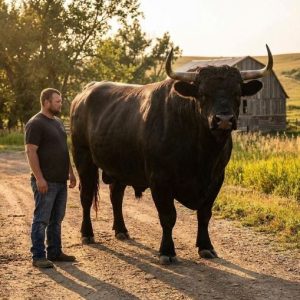I was about fifteen minutes out of the city when I saw it. A rusty blue flatbed hauling what looked like junk—clothes, cracked dishes, wires, even a lamp missing its shade. But in the middle of all that… a dog.
Big. Brown. Chained to the side panel, half-buried in the mess. It was barking wildly, tail tucked, straining every time the truck jolted.
I grabbed my phone and dialed local authorities. They asked for the plate number—but it was caked in mud, completely unreadable. The dispatcher sighed, said without a plate or exact location, they could not intervene.
So I stayed behind the truck.
Every mile it swerved a little more. The dog was stumbling, trying to keep its footing. I kept thinking it would leap—or fall. My heart was in my throat the entire time.
The truck didn’t slow down for villages. It sped past turnoffs, barreling toward what looked like an old industrial site.
Then the driver finally pulled off into a gravel lot surrounded by half-collapsed sheds. No signs. No other vehicles.
He got out. Looked straight at me and didn’t say a word.
I killed the engine, pretending to fiddle with my GPS like I was lost. But my eyes stayed locked on him in the rearview.
He was wiry. Greasy hair, long gray beard. Wore jeans that were black from engine oil and a coat far too heavy for July. He walked around the truck and unhooked something—probably the dog’s chain.
The barking stopped.
My stomach dropped. I cracked my door open, heart thumping.
He didn’t notice.
He was too busy dragging a tarp over the back of the flatbed, covering the junk and the dog. The whole thing felt wrong. Like he was concealing something more than trash.





